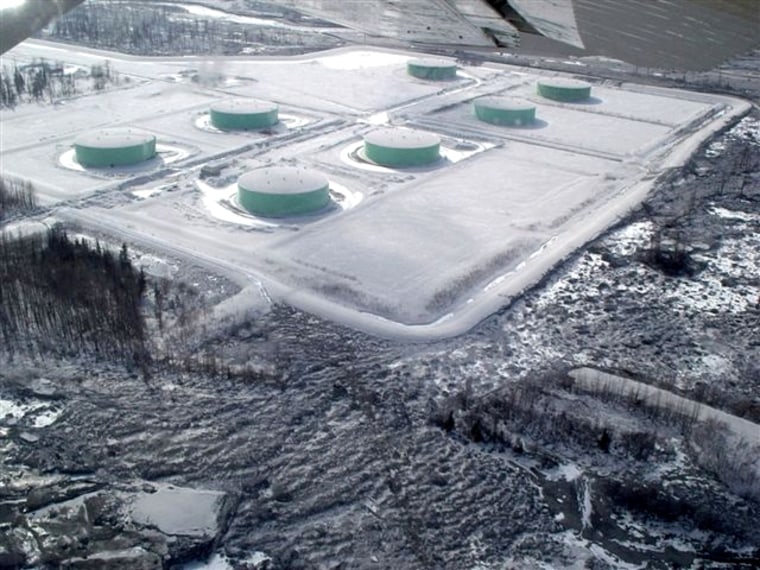The U.S. Coast Guard is planning to move some of nearly three million gallons of oil stored in two tanks near an Alaska volcano that has had 18 major eruptions in the last two weeks but has been relatively quiet in recent days.
Mount Redoubt began erupting on March 22. Since then, the volcano 100 miles southwest of Anchorage has produced numerous large explosions that have sent mud and rock cascading down its flanks. Some of that mud and debris has reached the Drift River Terminal, 22 miles away.
That has led to concerns that the terminal, where more than 6 million gallons of oil is stored in two tanks, could be damaged and cause a catastrophic oil spill that would damage Cook Inlet's valuable fisheries.
The Coast Guard said again Thursday that a concrete-enhanced dike surrounding the 42-year-old, Chevron-operated terminal is doing a good job of protecting the tanks from mud flows.
Most oil will stay
Plans now are under way to draw down some of the oil in the two tanks. The facility's other five tanks are not in use.
On Saturday, a tanker will be brought to a platform near the terminal to remove some of the oil. The plan is to leave nearly 1.7 million gallons in each tank. Some oil needs to remain in the tanks to prevent them from becoming buoyant and floating away if there was a flood, according to the Coast Guard and officials with the Cook Inlet Pipeline Co. The tanks now are each holding 3.1 million gallons.
"We are looking to remove as much of the product as we safely can," said Capt. Mark Hamilton, the Coast Guard's federal on-scene coordinator.
The pipeline that runs from the terminal to the offshore platform is being tested in preparation for Saturday, Hamilton said. When the oil is off-loaded, it will be taken by tanker to a storage facility at a refinery in Nikiski, Alaska, where the fairly light crude will be processed into gasoline and other petroleum products.
The joint command center overseeing the effort said "an Incident Management team of 54 federal, state and industry responders are currently working on the event."
Salmon runs in danger
A local conservationist said he was glad there was a plan to move the oil, but he was concerned the government's and oil industry's priority was the same as always: Keep the oil flowing.
One question does not get answered, said Bob Shavelson, executive director of conservation group Cook Inletkeeper: "What would it cost Cook Inlet to have a catastrophic spill?"
The group says the terminal sits above Cook Inlet salmon fisheries that support over $1.5 billion in economic activity annually.
It also has expressed concern that terminal-owner Chevron has been slow to share information, saying that during earlier discussions "Chevron refused to make public its Volcano Readiness Plan, and refused to reveal the volume of oil remaining in the storage tanks, citing Homeland Security Act concerns."
